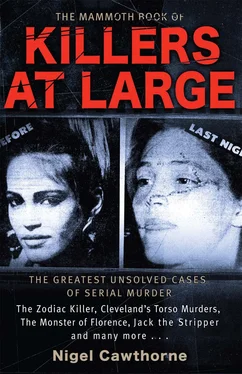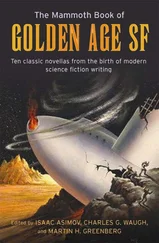Searching the house, they found a well-stocked fridge and cupboards, indicating that Carrie Yoder had returned from the store before she went missing. Questionnaires were handed out at the Winn Dixie. Meanwhile helicopters searched the area.
Ten days after Carrie Yoder went missing, an angler found her body in the Atchafalaya River near the Whisky Bay Bridge—not far from where Pam Kinamore’s body had been dumped eight months before. She had been badly beaten and she had put up a fierce fight before she had been strangled. DNA evidence showed that she was the fifth victim of the Baton Rouge serial killer.
On 17 March 2003, the family and friends of the victims staged a demonstration on the steps of the Louisiana state capitol in Baton Rouge demanding that something more should be done. The task force’s response was to tell the public that they should ignore the composites previously circulated. They were now looking for a man of any race or description. Nor should they only be on the look out for white pick-ups. The killer might be using a vehicle of any type as no white truck had been spotted in connection with Carrie Yoder’s murder.
On 24 March, Melinda McGhee, a 31-year-old mother of two, disappeared from her home in Atmore, Alabama. She worked as a nurse in a nearby nursing home. She called her mother and her husband from there some time before 8.30 on the morning of her disappearance. In her home, there were signs of a struggle, but no evidence of murder and no DNA that could identify the perpetrator. Although Melina McGhee’s home was some 220 miles from Baton Rouge, it was easy to get to up the Interstate and there were striking similarities between McGhee’s disappearance and those of Kinamore and Yoder. However, no body has been found.
On 8 April 2003, another name was added to the list of victims. This was not a new case, but one that had been overlooked before. On 10 February 2002, the naked body of Lillian Robinson, a 52-year old prostitute from St Martin Parish between Lafayette and Baton Rouge, had been found in the Atchafalaya River, near Whisky Bay Bridge. She had gone missing the previous month. However, the body had been in the water for more than a week and was so badly decomposed it was impossible to obtain reliable DNA samples.
Possibly another woman had fallen victim to the Baton Rouge serial killer in May 2002, when the car of Christine Moore, a 23-year-old student at Louisiana State, was found abandoned near River Road in Baton Rouge. She had left home to go jogging at a park, but never returned. Her body was found on a dirt road in Iberville Parish in June. Like Trineisha Colomb, she had been bludgeoned to death. Despite its similarities to the other killings, her death was not formally attributed to the Baton Rouge serial killer.
The investigation then took a surprising turn on 23 May 2003 when Fox News reported that the task force were looking into three incidents in which a young black man attacked women in St Martin Parish, though none of them were killed. A composite was produced showing a light-skinned African-American male who said his name was Anthony and, initially, tried to charm his victims. Until then, it was assumed that the Baton Rouge serial killer was white.
On 5 May DNA swabs had been taken from a man who resembled the composite and were sent to the crime labs for analysis. They matched the DNA taken from the body of Carrie Yoder and linked the suspect to three more victims of the Baton Rouge serial killer.
The DNA belonged to 34-year-old Derrick Todd Lee, who lived in St Francisville in West Feliciana Parish, 20 miles north of Baton Rouge. He had given the sample voluntarily nearly three weeks earlier, but later that day his wife Jacqueline Denise Lee took their two children out of school, saying the family were moving to Los Angeles. Packing up their belongings, they left their brick-built ranch house at 4273 US 61 in St Francisville and fled, first to Chicago, then to Atlanta.
On 26 May a warrant was issued for his arrest. The following day he was arrested in a tyre store in Atlanta. For a week he had been living in Lakewood Motor Lodge, where other residents found him to be a “very nice man” who grilled ribs and chicken at a party and set up a Bible study class. He even charmed a number of women there, inviting them back to his room for a glass of cognac. Lee waived extradition proceedings and was flown back to Louisiana voluntarily the next day. Initially he was charged with the murder of Carrie Yoder. However, by early June he was also accused of the rape and murder of Gina Green, Charlotte Pace, Pam Kinamore and Trineisha Colomb.
What confounded the authorities was that Lee did not fit the typical profile of a serial killer, specifically not the profile they had drawn up in this case. Lee was black, with a wife and two children and was outgoing and charming to everyone he met, not a solitary white male who was awkward, introverted and a bit of a loner.
He did, however, have a criminal record that stretched back to 1984 when he was caught peeping into the window of a St Francisville woman’s home at the age of 15. A string of arrests for peeping, stalking, as well as illegal entry, burglary, assault and resisting arrest continued until 1999. Then things got more serious. In January 2000, he was accused of attempted murder after severely kicking his mistress Consandra Green after an argument over Lee’s advances towards another woman in a bar. While fleeing the police, he tried to run over the sheriff’s deputy and got two years. After being released the following year, he was arrested for wife-beating, but the charges were dropped. It was said that his wife “lived in denial of her husband’s transgressions, which include stalking, peeping into windows and infidelity”. At one point, against his wife’s wishes, he moved a mistress into the family home. The police in Zachary, Louisiana, ten miles north of Baton Rouge, also suspected Lee in the murder of 41-year old Connie Warner in 1992 and the disappearance of 20-year-old Randi Mebruer in 1998.
The police were particularly eager to trace Lee’s wife Jacqueline. She was found by the FBI in Chicago in June with the couple’s two children. They had received an anonymous tip-off that more bodies had been buried under a concrete slab at the couple’s home and needed her consent to dig it up.
They also set about excavating the driveway at the former home of Lee’s girlfriend Consandra Green as Lee had been seen pouring concrete to form a roadway there in the middle of the night only a couple of days after Randi Mebruer had disappeared from her home in Zachary, Louisiana, in 1998. A woman’s bracelet was found, but the search for human remains drew a blank at both of the sites. However, in February, DNA evidence linked Lee to Randi Mebruer’s disappearance. The police in Bolton, Mississippi, also tried to tie Lee to the slaying of four women found near a truck stop as he once been a truck driver.
Investigators were still puzzled by the white pick-up seen in the Kinamore murders. They impounded a truck from Consandra Green’s uncle, said to have been sold to him by Lee, but no connection was established between it and the murders. As the witness had said that the driver of the truck was white, the pickup she had seen might have had nothing to do with the murders. Then there was the rape victim who had been sexually assaulted by a white man in a white van.
On 24 September 2003, Lee was formally indicted with the first-degree murder of Trineisha Dene Colomb of Lafayette, Louisiana. However, the district attorney decided not to take that case to trial. Meanwhile DNA evidence failed to link Lee to the murder of Connie Warner.
The following Wednesday, Lee was charged with the attempted rape and murder of Diane Alexander, a nurse in Breaux Bridge outside Lafayette. She claimed that Lee had beaten her and attempted to rape and strangle her in her trailer in 2002—and would have succeeded if her son had not come home and scared him off. Lee was also charged with the murder of 21-year-old Geralyn DeSoto, who was found beaten and stabbed in her mobile home at Addis, across the Mississippi from Baton Rouge, on 12 January 2002—the day she registered as a graduate student at Louisiana State. This was a second-degree murder charge because the prosecution felt it could not prove an underlying felony, such as forced entry or rape, which is needed for the charge of first-degree murder in Louisiana.
Читать дальше











